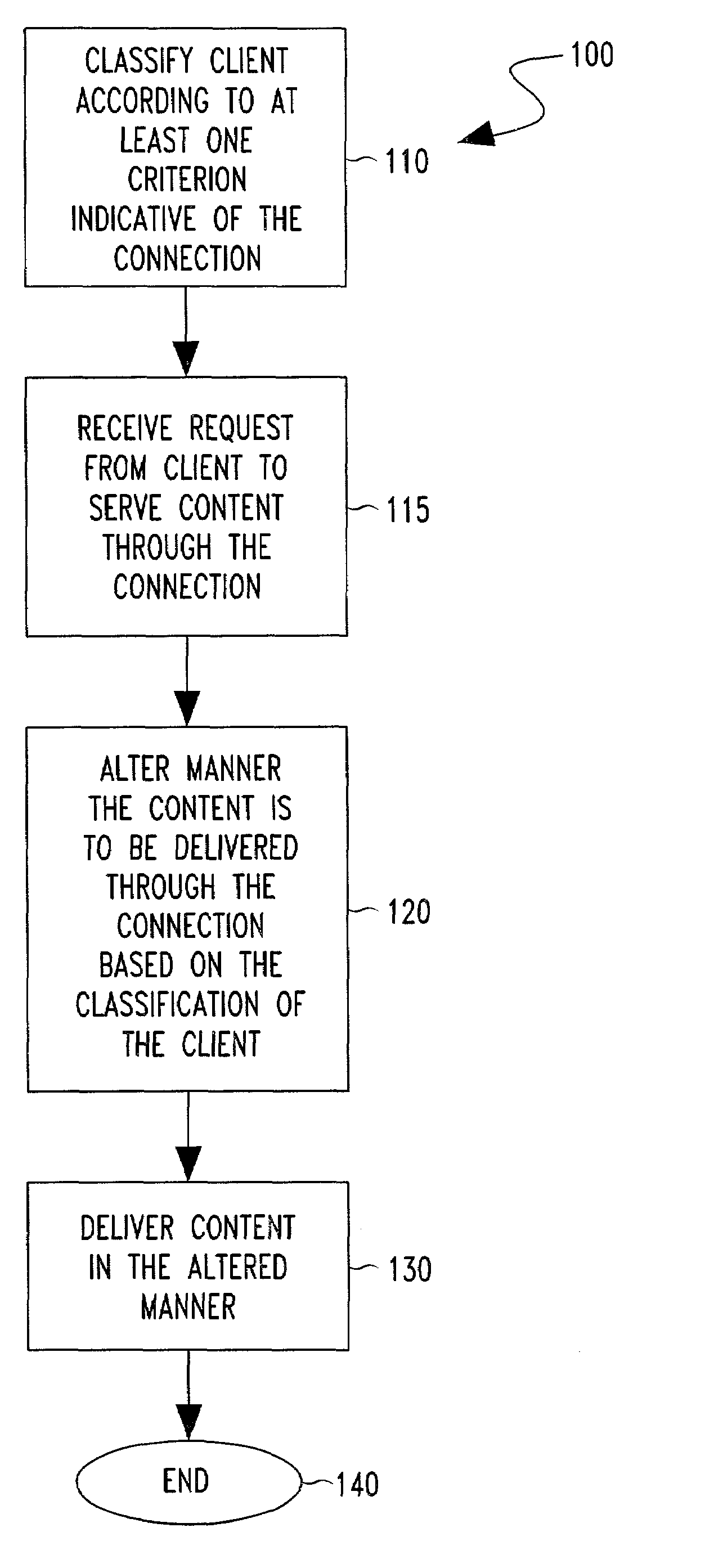Method for improving web performance by adapting servers based on client cluster characterization
a server cluster and client technology, applied in the field of client server model, can solve the problems of poor client connectivity, low bandwidth, poor client experience, etc., and achieve the effect of improving the performance of the server delivering content to the clien
- Summary
- Abstract
- Description
- Claims
- Application Information
AI Technical Summary
Benefits of technology
Problems solved by technology
Method used
Image
Examples
Embodiment Construction
[0041]The present invention provides methods for classifying clients in a stable manner into a small number of categories, and provides a set of actions to be taken by a server based on the classification. As demonstrated below, those actions result in meaningful improvements. Once a client has been characterized, it is necessary to map that characterization to an appropriate action for the server. Well-connected clients may require no change in the actions taken by a server. Additionally, grouping clients, and specifically the use of network-aware clustering, may be effective for classification and application of server actions.
[0042]FIG. 1 shows a method 100 of the invention for improving Web performance perceived by a client that is connected to a server through a connection. In a preferred embodiment of the invention, the client is an Internet browser such as the well-known Microsoft Internet Explorer® or Netscape Navigator® browsers, and the connection is a TCP / IP connection us...
PUM
 Login to View More
Login to View More Abstract
Description
Claims
Application Information
 Login to View More
Login to View More - R&D
- Intellectual Property
- Life Sciences
- Materials
- Tech Scout
- Unparalleled Data Quality
- Higher Quality Content
- 60% Fewer Hallucinations
Browse by: Latest US Patents, China's latest patents, Technical Efficacy Thesaurus, Application Domain, Technology Topic, Popular Technical Reports.
© 2025 PatSnap. All rights reserved.Legal|Privacy policy|Modern Slavery Act Transparency Statement|Sitemap|About US| Contact US: help@patsnap.com



